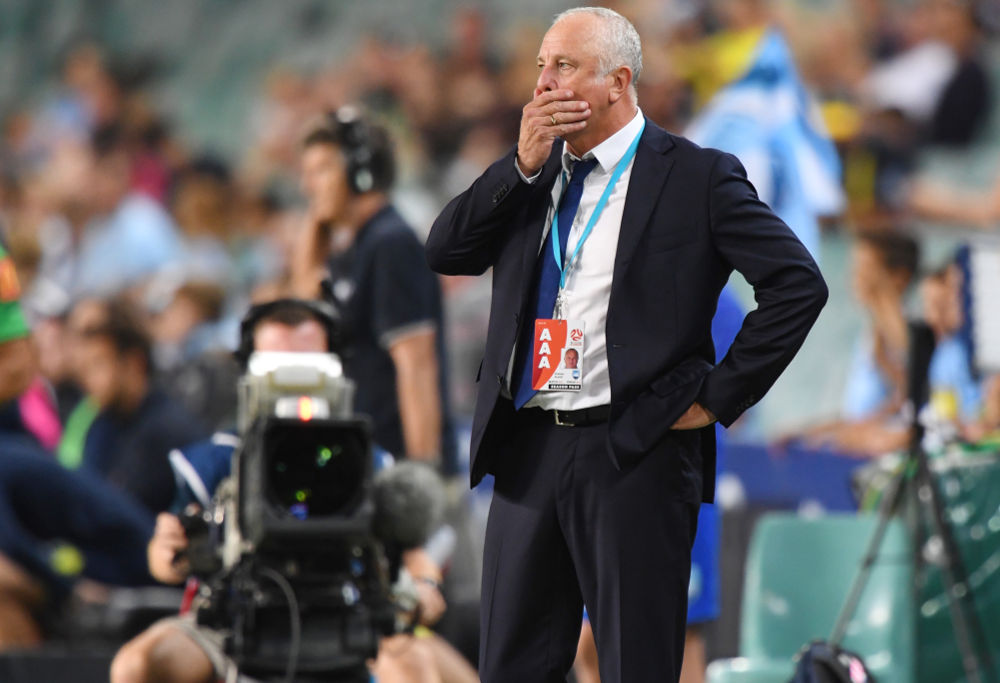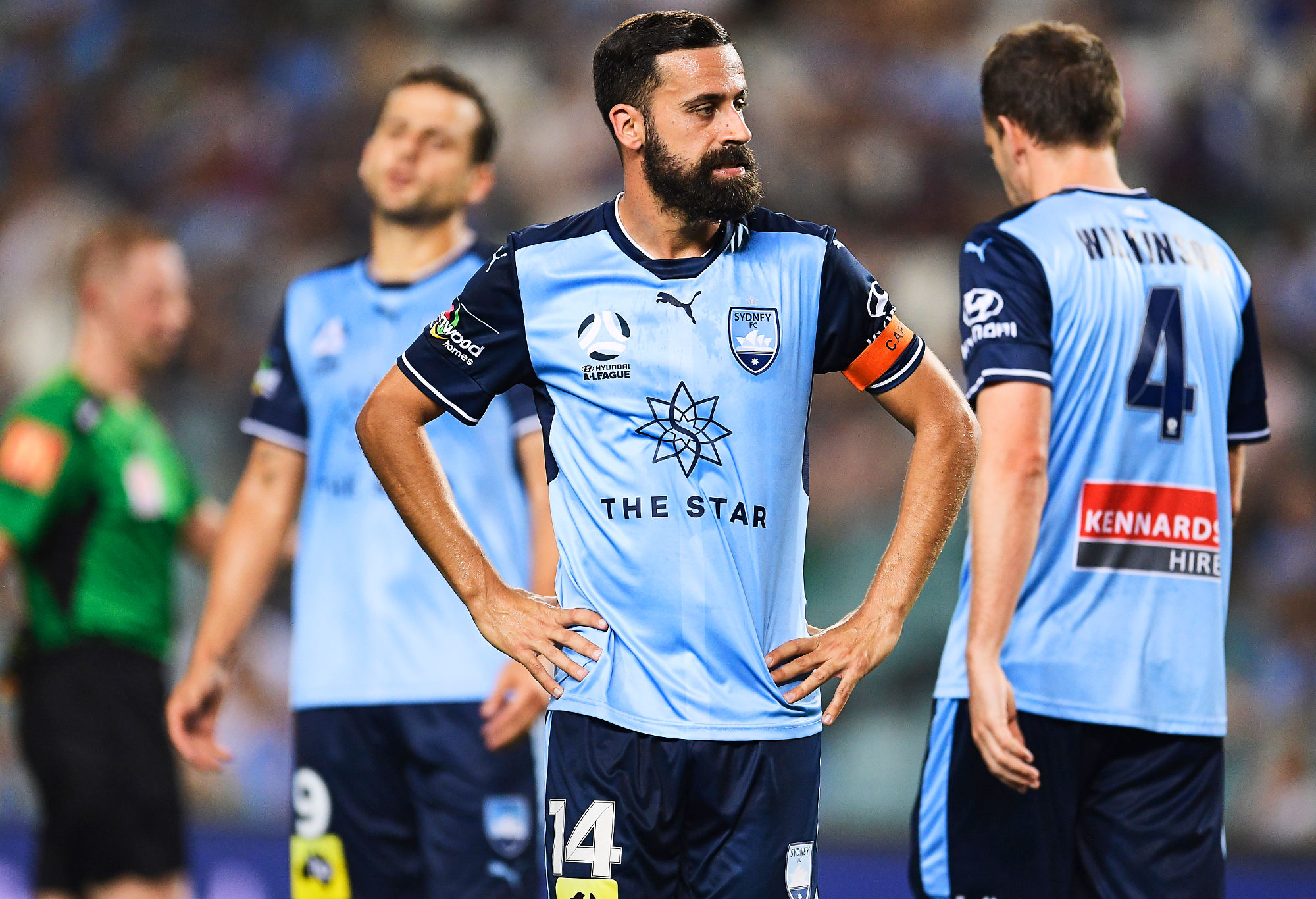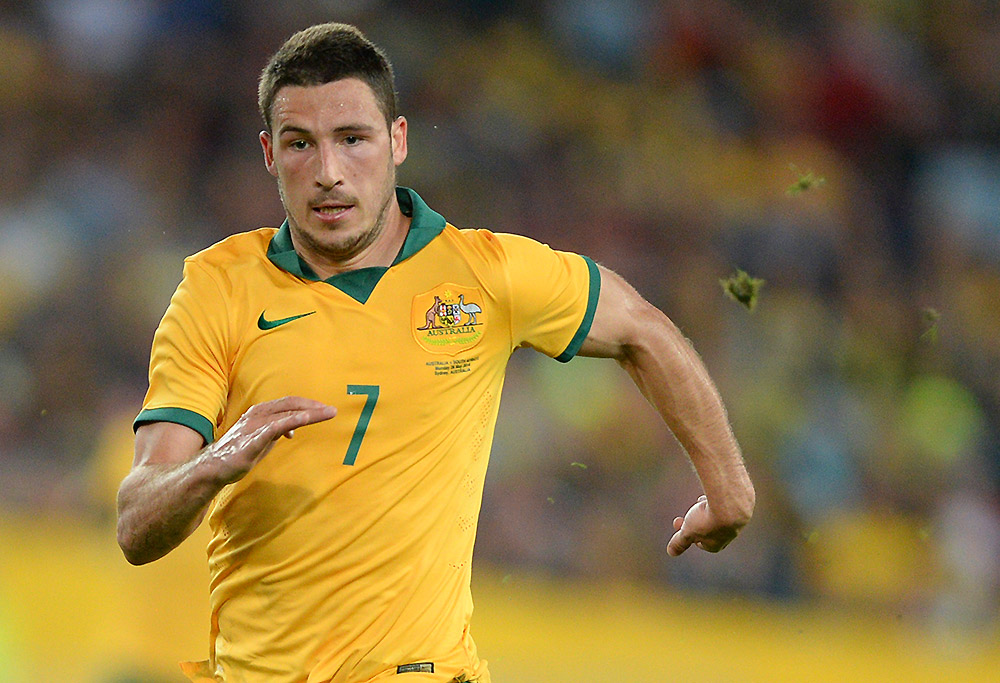Many articles have been written and many teeth have been gnashed over the appointment of Graham Arnold as full-time Socceroos coach at the completion of the World Cup.
Given that the A-League grand final has come and gone and didn’t feature Sydney FC, Arnold’s promotion now appears less meritorious than it did a few months ago.
But should it? The magic of any cup campaign is that any team can win (or lose) in a single head-to-head fixture. So while Sydney FC are not going to hold up the silver ‘toilet seat’ this season, they were a dominant force in the A-League and Arnold was – albeit contentiously – recognised as manager of the season.
So how will Arnold carry his A-League form, tactics and reputation into the Socceroos job? To start we must recognise that the role of Socceroos manager is effectively two positions wrapped into the one pay cheque. There is the obvious tactical part of the job – the implementation of a game plan, the selection of squads etc – but the other role is that of the evangelist. For right or wrong, the Socceroos manager is pushed forward into being a figurehead for the sport in this nation. On both fronts Arnold is on challenging ground.
As a tactician Arnold is a big departure from Ange Postecoglou. That is no ‘criticism’ (as readers of my previous articles will know), but on the park we should expect a very different style of football than we are used to. In fact Arnold will represent more of a continuation of Bert van Marwijk’s philosophy than Ange’s.
His Sydney FC team plundered teams on the counter and he leveraged his two excellent playmakers – Milos Ninkovic and Adrian Mierzejewski – to transition into the forward phase with clinical efficiency and much more directly that Ange’s patient build-up from the back.

(AAP Image/David Moir)
Arnold’s Sydney FC defended with a low block of six, including a double pivot of Josh Brillante and Brandon O’Neill. They were an experienced and capable collective featuring the smarts and experience of three former Socceroos, one current fringe Socceroo (Brillante), one of the league’s best ball-playing central defenders in Dutchman Jordy Buijs. A very experienced and talented back four with two pivot players who are young and prolific
runners meant that Sydney could sit low and then counter with precision.
In the forward phase Sydney FC structured their approach in two vertical halves, with Ninkovic and Mierzejewski operating as playmakers on either side. They both often operated in the half spaces – one on the left and the other on the right. Their nominal number ten, Alex Brosque, presented between the lines to link play while big target man, Bobo, usually sat on the shoulder of a centre back to offer an option (often aerial) when they penetrated to the byline.
Structurally Sydney FC attacked in a narrow formation but generated width from overlapping fullbacks, Luke Wilkshire on the right and Michael Zullo on the left. This usually meant they penetrated with four forwards, one of the fullbacks with some support from (usually) Brandon O’Neill from deep. Arnold’s Sydney FC preferred ground balls with the exception of crosses from width aimed at Bobo’s forehead (often from the fullbacks).
Even though Sydney FC loved to counter, they were an old team (and still are), with many forwards and mids on or around 30, so they typically didn’t penetrate with great speed. Typically they would outsmart and outplay their opponents through the gulf in talent between Ninkovic and Mierzejewski and their A-League opponents. In instances where this gulf was narrowed, like in the AFC Champions League, Sydney FC was not as tactically effective and struggled to break down opponents.
Sitting players in front of their attacking midfielders or man marking them put a serious dent into Sydney’s ability to penetrate, as Bobo was almost exclusively used on the end of moves and Alex Brosque isn’t really a playmaker and is more a link man. And as they didn’t stretch teams with width, they weren’t able to create pockets of space for Ninkovic and Mierzejewski to play though.

(Brett Hemmings/Getty Images)
Applying the Sydney FC model to the Socceroos is a somewhat difficult thought exercise. Arnold may of course choose (or need) to take a difficult approach to structuring the national team, but forcing our better players shape-for-shape into the Sydney FC game plan means someone misses out or is played out of position.
The back four should be okay; in fact Aziz Behich would be the archetypal left back for Arnold. Arnold needs ‘proper’ fullbacks who can offer width while pushing forward, so we would be less likely to see Milos Degenek or Bailey Wright employed at right back.
Trent Sainsbury would be perfect in the Jordy Buijs role if he isn’t utilised in the double pivot and could be crucial in playing the ball quickly to the attacking midfielders in a counter.
In central midfield Arnold will have to either adjust his tactics or ask players to adjust their natural game. He would favour a deep-lying screen like Josh Brillante, which may even be Josh Brillante if Mile Jedinak hangs up his national team boots after the World Cup. Besides the screening player, someone like Mass Luongo or Aaron Mooy can tackle and distribute but would be asked to curb their natural tendency to get too far forward and expose space behind them.
Tom Rogic would fill one of the attacking midfield roles naturally, and the other of Mooy and Mass could occupy the other side (whoever doesn’t get the screening role). Tomi Juric is a natural in the Bobo role.
The Brosque role behind the striker is potentially the most difficult to fill. Rogic might be the choice here, but you then rob his influence and time on the ball, and it also means you will need to use both Mooy and Luongo in the playmaker roles, which requires another screening player.
I would use Mat Leckie in behind the striker as a ‘central winger’ who can run and present into pockets, push in to support the midfield on defensive transition, and also use his pace to get onto through balls against high lines.

(AAP Image/Lukas Coch)
Arnold’s team would struggle to accommodate a player like Jackson Irvine as his distribution and handling by foot are inferior to the names listed above, and at best he would need to adjust to a deeper role in the double pivot. Arnold’s Sydney played so narrowly that this style wouldn’t get the best out of a player like Mat Leckie, who is best in a wide role.
The same applies to a player like Daniel Arzani. This may be premature, but within the next World Cup cycle Arzani could potentially make large strides at club level in Europe. Right now it isn’t clear where Arzani could play in Arnold’s Sydney FC formation unless he was given a licence to drift wider in the attacking midfield role and then run at defenders. He could eventually evolve his game into central roles, but right now in his development the wider role suits him best.
There is also a danger that he will need to force caps into defensive midfielders who better suit his system. If players like Brillante or Jimmy Jeggo are given caps ahead of Matt Leckie because they fit a structure, the quality and the utility of the overall team is weakened.
Tactics aside, as an evangelist Arnold faces a number of challenges to succeed as his bristly media persona suggests. ‘Soccer’ in this country is still clawing airtime and imagination from the other football codes. The identity of the Australian football team is being drawn in every tie. We look to the manager – who is the person fronting the media most often – for cultural cues to weave into this identity.
Compare for a moment the experience of going to a Socceroos game to, say, standing at the Kop. Liverpool managers might come and go, but the culture of Liverpool FC pervades and is traced through its history. Our Socceroos identity is formative and the current manager is always its key protagonist. He represents the ideological blueprint for the code, including banal things like being a spokesman for the quality of pitches.
He is a gateway drug for fringe supporters and refugees from other football codes to then go on and embrace the sport. Having a relatable persona (or, at best, a ‘cult’) around the Socceroos manager allows supporters of other codes to connect to him and the sport at large. If Arnold cannot inspire half of his football audience, he will struggle immensely to build that cult for the broader sporting community.
[latest_videos_strip category=”football” name=”Football”]
In this role Arnold has a big problem. Arnold polarises the football public more than any other identity in this country. The fans, the media – and I suspect his peers – all seem to hold absolute and contradictory views on Arnold. And whether the negative perspectives are warranted or justified or not, these are yokes that Arnold will carry as he assumes management of the national team.
We have never before appointed a coach into the Socceroos top job who carries this amount of baggage. All of Arnold’s predecessors have taken the reigns with a supporter spirit ranging from wild optimism (think Guus Hiddink and arguably to the early days of Ange) to a reserved or measured optimism that applied to Pim Verbeek or Holger Osieck. We didn’t know much about them but we were excited about their pedigree.
Sadly for Arnold, while some parts of the supporter base are doing cartwheels, other parts of will be hoping for his reign to come to a swift end.
This makes his job even more delicately balanced. He will often find himself defending his tactics, and his media personality today doesn’t suggest it can stretch to being a salesman or showman. What Arnold lacks in charisma he makes up for in bristle. Ange also suffered in this part of his role, and one wonders if his toxic media relationships impacted the culture of the team or his appetite for the role.
If the Ange experience has taught us anything, it is that media resilience should be a key part of the role for a Socceroos manager. Older Dutch figureheads seem to be able to wave away media challenges with a look or an upturned lip. Ange stuck in – to his detriment – and Arnold likely will too.
Arnold’s baggage means there will less likely be an early grace period or clear air for him to build his structure or sell his vision. Poor results in the Asian cup won’t be as easily tolerated as Ange’s World Cup losses, even though Arnold will also face a generational change with the likes of Tim Cahill, Mile Jedinak and Mark Milligan likely to (or should) be moving on.
Arnold’s Asian Cup will be a fascinating test of his mettle and his tactics. Whether he is willing to compromise on anything from his Sydney FC model to assemble a successful team and/or relationship with the media will be the most fascinating test of all.
































































































